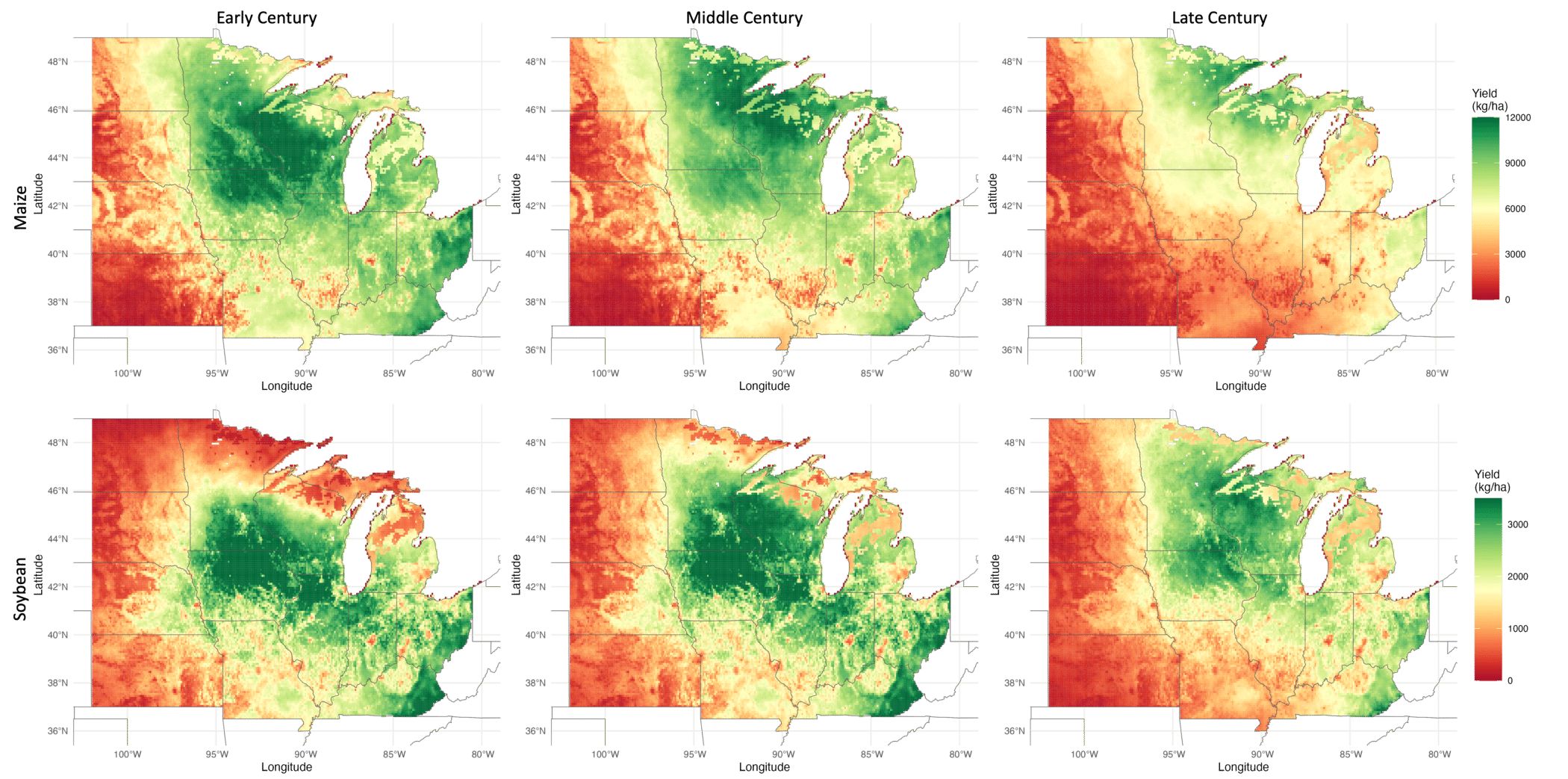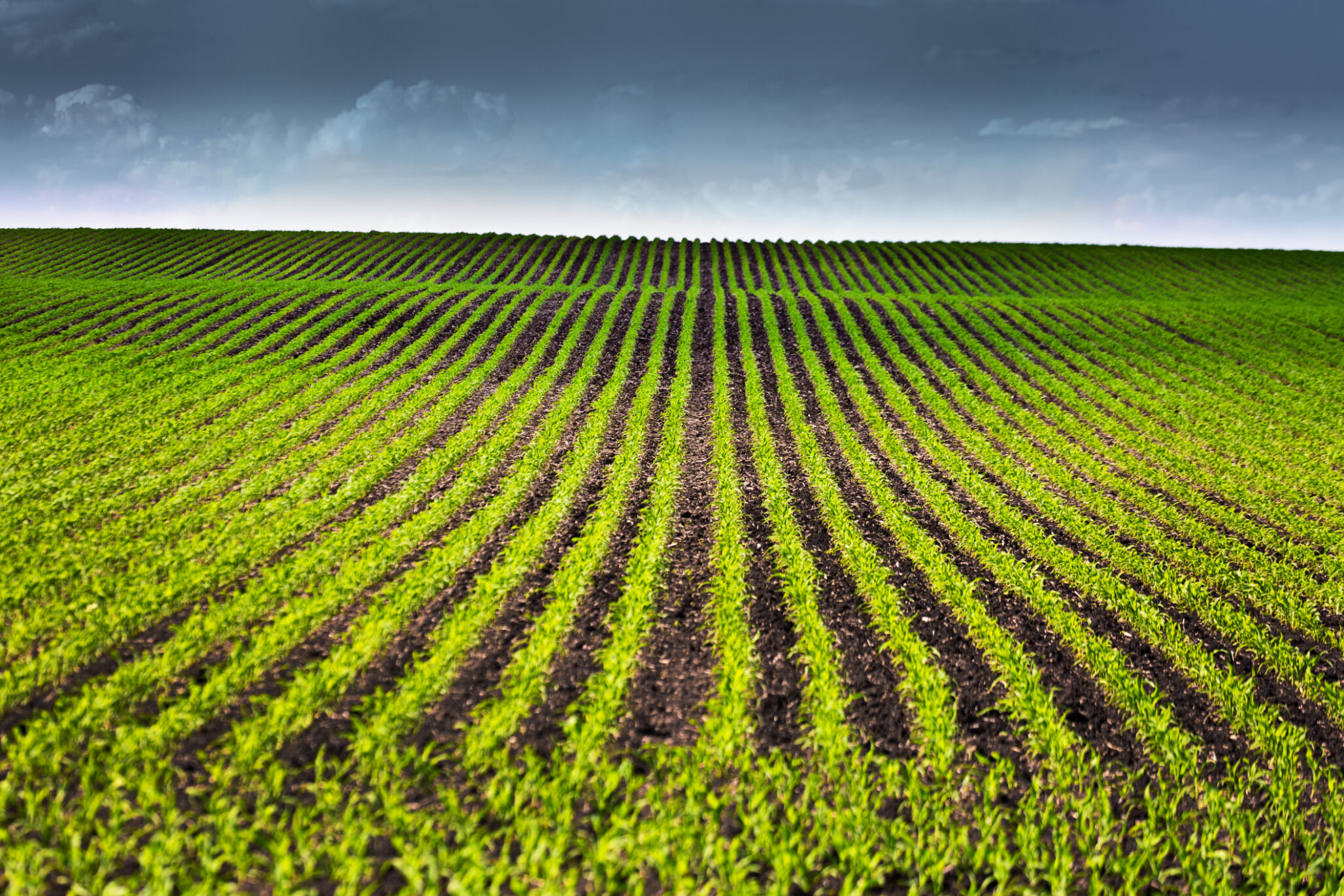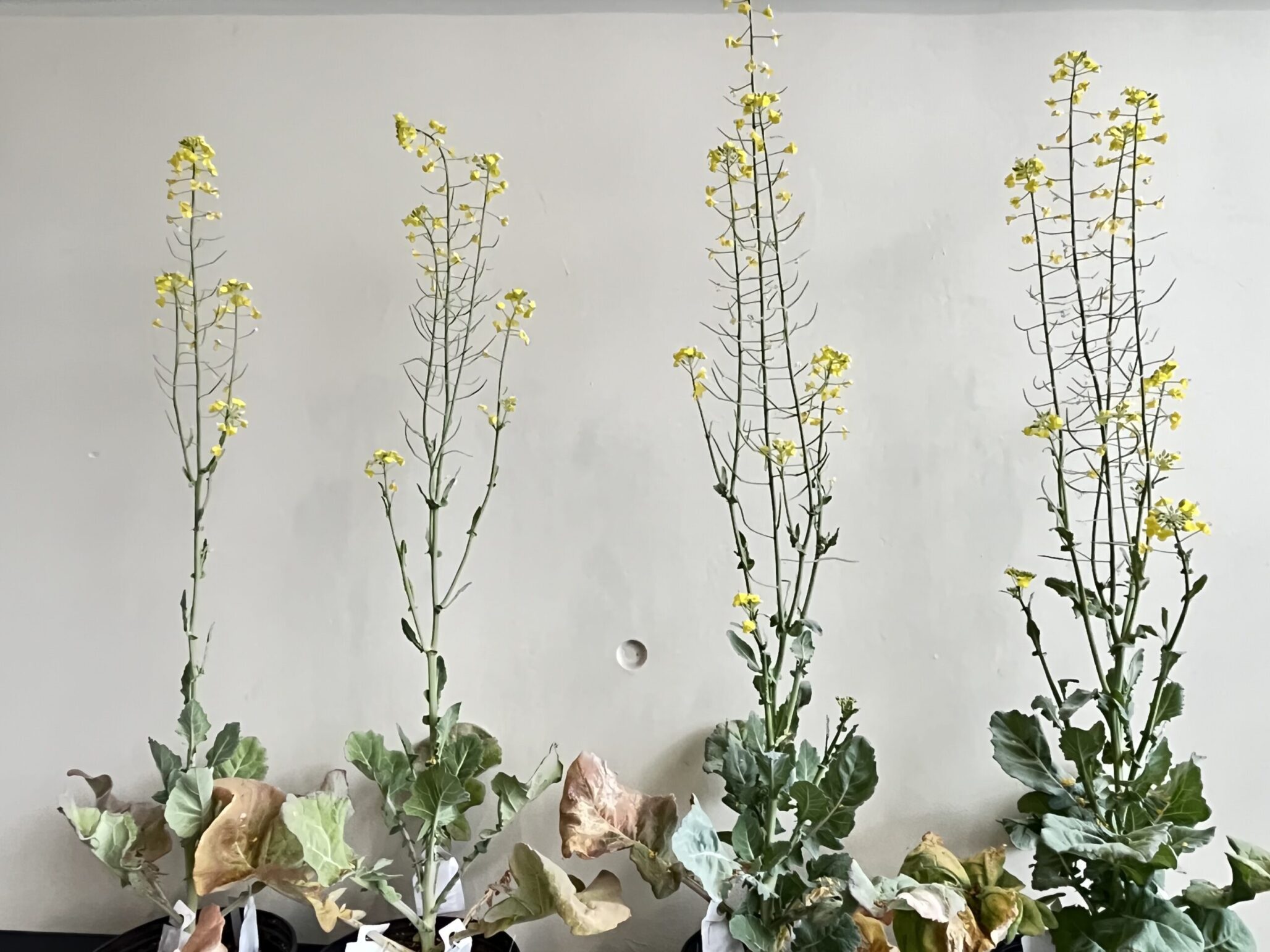New study predicts the impact of a changing climate on crop yields in the Corn Belt, and the results are daunting.
New research from the University of Connecticut’s Department of Civil and Environmental Engineering outlines how a changing climate is likely to impact corn and soybean yields in one of America’s most productive growing regions: the Corn Belt.
Post-doc Meijian Yang and professor of civil and environmental engineering, Guiling Wang, used a simulation model called the Decision Support System for Agrotechnology Transfer to track how different physiological processes in key crops would respond to changing environmental conditions. The model took as inputs the CO2 concentration, the amount of fertilizers applied and the projected climate variables (including sunlight, precipitation, temperature, and wind speed) on each day through the growing season under a given climate at a very localised (2.5 mile) spatial resolution. Based on the simulated growth and stress of the crop, the model then calculated estimated yield for each crop. Ten projections of future climates were considered, each corresponding to a different climate model.
What’s ahead?
Farmers in the Corn Belt won’t be pleased by the model’s projections. To begin with, the model shows a 40% drop in maize yield by late in the century.
“For maize, the consensus is really strong, and I therefore have confidence for the maize response, both in mid-century and late-century. We see a 12% decrease [in yield] for maize by mid-century and 40% by late-century,” says Wang.
“Climate will cause corn to be less productive. We are confident in the direction of the trend.”
Soy is harder to predict. While corn will suffer sooner from heat stress, soybeans may benefit from temperature increases in the short term and, more notably, from higher CO2 levels. After 2050, however, the impact of heat stress is likely to counteract higher C02’s fertilization effect.
“The [predictive] models have consensus in producing a future climate that would cause yield for soy at mid-century to go up,” says Wang.
That’s the good news. On the later side of 2050, however, as greater heat stress begins to impact soybeans more significantly, yields could nosedive drastically.

“If you look at soy based on climate predictions from individual models, there is a very large variation among the models. Some climates would cause a huge decrease in yield, others would cause little change,” says Wang.
The models show not just that the average yield goes down, but much greater fluctuations in yield than have been seen until now.
“You end up with a lot more extreme years where yield loss is a problem. That has implications for insurance companies. How will that influence farmers’ ability to get insurance?” says Wang.
The researchers found that soy and maize yields were limited mostly by water availability into the 2040s and 2050s. After the 2050s, however, the model showed that heat will become the primary yield limiting factor, first for maize and later for soybeans. That has big implications, not just for farmers, but also for plant breeding. Breeding for heat tolerance must be a top priority even now, as variety development typically takes many years.
How much heat is too much heat?
Most of the climate projections used in this study originated from models that produced approximately 2°C increase of global mean temperature by about 2050 over a 2000 mean. Of course, a two-degree global increase does not simply mean the mercury rising by a consistent two degrees in every growing region and on every growing day.
“Here in the mid-latitude, Northern Hemisphere U.S., we always experience more than the global mean for temperature increase. That’s the first point. The second is that, when we talk about heat stress, the global mean temperature is an average. It does not convey the severity of the heat that an individual region is subjected to in an individual year,” says Wang.
The study also showed that the most productive growing regions will move northward by 2050. That shift will not be enough to compensate for loss in yield currently produced in more southern regions, however.

“To me, personally, I was surprised by such a clear northward shift of the productive zone, and I was also surprised to see for soybean, yield actually increases and then decreases. The problem related to that in terms of adaptation is that you’re looking at an increase of yield for a few decades and then a decrease. How do you adapt to that? Are we going to shift the infrastructure northward, but do that only for a few decades? Is that worth it? I think there is a lot of uncertainty related to this. Yes, the yield is going to go up in those regions but how do you take advantage of that?” says Wang.
Many factors impact the future
Wang and Yang both point out that, though their study provides much more accurate and much more localized, granular prediction, the results consider the impacts of a changing climate in isolation.
“I want to make sure everyone understands that this is purely a projection of the climatic impact. This is not a prediction of the future. This is not to say that yield will actually go down, because technology has always advanced to bring more yield. The way to look at it is not in terms of yield decreases. Rather, it’s how much can we expect the yield increases we get from technology and breeding to be offset by climate change?” says Wang. “And how much do farmers need to change how or where they grow?”
Too, points out Yang, there’s much opportunity to change the predicted outcome over the coming years.
“We are considering the most pessimistic outcome for climate change. If we make advancement in mitigating climate change, the situation will not be as extreme,” says Yang.












